How High Can Birds Fly? The Surprising Answer!
Last Updated on

Like several other animals, birds have evolved to become better creatures. Their ancestors—the theropods—couldn’t fly or even try. What you get to see nowadays are forelimbs that are so adapted to flying that they can keep them up in the air for very long periods of time. In fact, we believe the longest time a bird has stayed in the air is 10 months, a record held by the Common Swift1.
Birds also sometimes feed while flying, and even take a siesta2. And if you thought that was mind-boggling, listen to this: Researchers are now saying that they suspect some bird species are able to mate mid-flight.
But how high can birds fly? Let’s find out.
How high up do birds go?
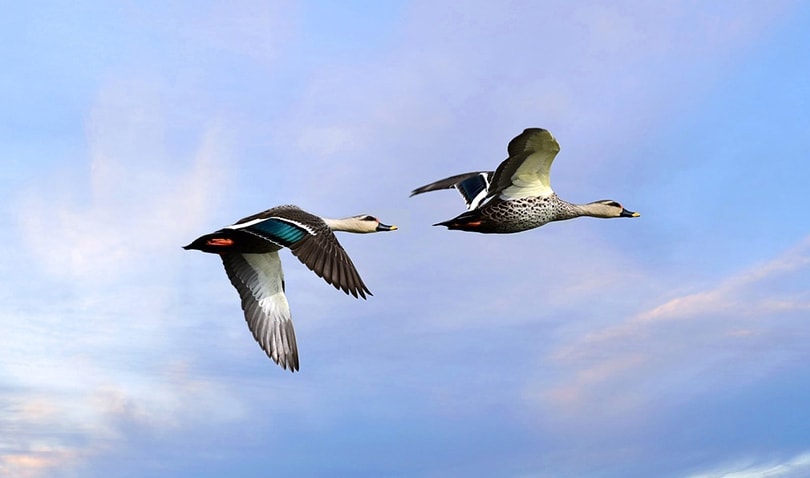
As things stand, the highest flyer ever recorded in history is the Ruppell’s Griffon Vulture—and we know this because it collided with one of the engines of an airplane that was 37,000 feet above the ground. This was according to a report published in the Wilson Bulletin journal in 1974.
Before that rare occurrence, researchers speculated that certain species had the ability to fly to altitudes that were cold and lacked enough oxygen. We just didn’t know how high up those altitudes were until the Ruppell’s incident happened. Most of the birds that were studied during that period would fly at altitudes that were between 11,000 to 13,000 feet above sea level.
The Journal of Experimental Biology details how birds are capable of enduring any physically challenging situation thanks to their backbone. Apparently, being a vertebrate is advantageous, since the backbone stiffens the body and helps different muscles coordinate more efficiently.
Studies have also proven that birds don’t suffer from altitude sickness the same way humans do. They have physical adaptations that protect them from such effects, including the effect of cerebral and pulmonary edema. Some of them will even resort to hyperventilating to increase their oxygen intake while soaring.
Hyperventilation usually changes their blood chemistry in the sense that it becomes even more alkaline. That alkalinity will ensure that the blood’s hemoglobin has a higher affinity for oxygen.
It’s important to note that birds don’t usually fly at high altitudes for a very long time. They have a strategy called the roller-coaster strategy. Somehow, they are aware that by flying to greater heights, they keep on burning too many calories. Calories that they’ll need if they are migrating long distances. So, they’ll fly high for a couple of hours, and then come down to levels that we’re used to seeing them. The closer they are to the ground, the more energy they end up saving. That’s why you’ll see birds such as bar-headed geese flying at more than 19,000 feet, then suddenly coming down to 16,000 feet above sea level—they are that intelligent.
What are the highest-flying birds?
1. Ruppell’s Griffon Vulture (37,000 feet)
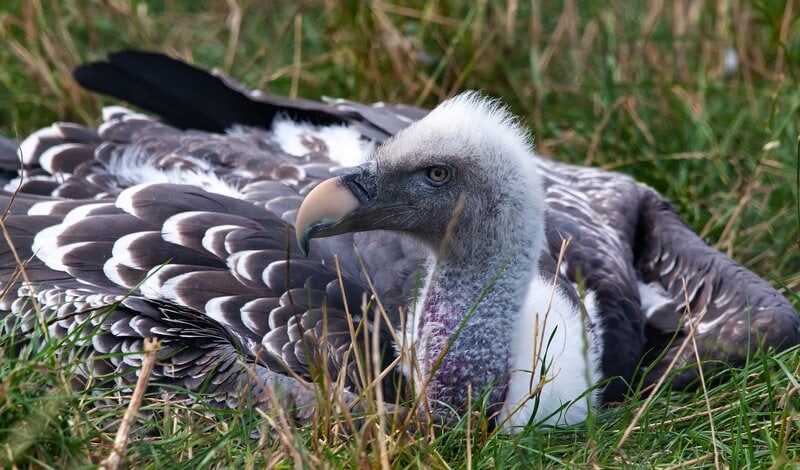
As mentioned earlier on, the Ruppell’s Griffon Vulture—scientifically known as the Gyps Rueppellii—is the highest flyer we know of. There are only about 30,000 of these vultures flying around, meaning they are endangered.
2. Common Crane (33,000 feet)

Cranes are spread out across the world, but they are common in Asia and Europe. They love migrating to the northern parts of Africa during winter, or the southern regions of Europe. Because eagles love preying on them, they’ll fly above 33,000 feet just to avoid them.
3. Bar-headed Goose (27, 825 feet)
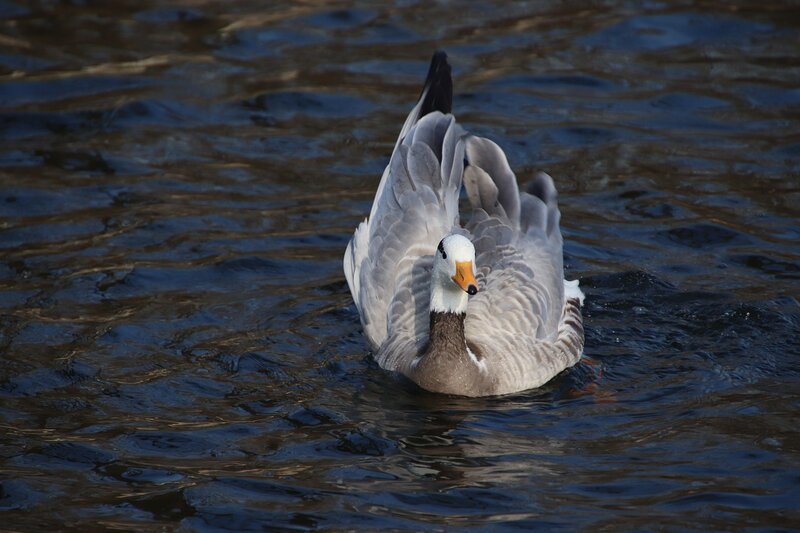
Identifying this species is pretty easy. Just look for any bird that has double bars of dark feathers wrapping around its head. If you squint a little, you’ll think someone decided to domesticate them using lead ropes just like horses!
Bar-headed geese have built homes in the mountainous regions of Tibet, but when the weather changes and food is scarce, they’ll swiftly cross the Himalayas to get to the Indian subcontinent.
4. Whooper Swan (27,000 Feet)
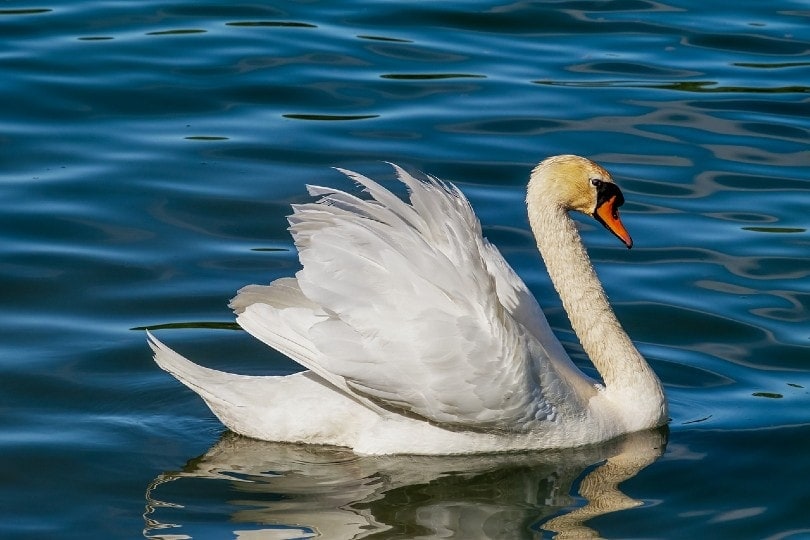
Fun fact: The whooper swan is a bird species that pair for life. And they are very intelligent compared to other birds because they communicate and coordinate their migrations. We don’t know which type of compasses they use, but if they sense one of them is slowly deviating from the flight path, they’ll start sending signals to put them back on course.
5. Alpine Chough (26,500 feet)
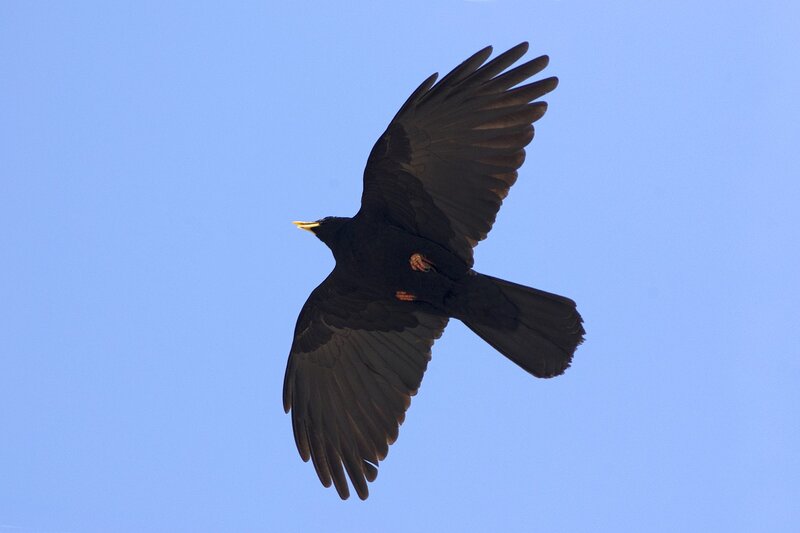
The chough belongs to the crow family, which you’ll immediately realize once you spot one. They love breeding in northern Africa and prefer laying their eggs in altitudes that are high above sea level. This is probably to discourage their predators from getting to them.
What happens if birds go too high up?
Most species can’t go too high up because they will be forced to flap harder to stay aloft—something that they might not be able to do if their wing muscles aren’t adapted to such strenuous situations. In addition, let’s not forget that high altitudes have higher metabolic demands. As the oxygen gets thinner, and the air colder, they might not be able to maintain the same body temperature. This could be fatal.
Are there birds that fly over Everest?
There have been stories of mountain climbers talking about how they spotted bar-headed geese migrating and flying over Everest when they got to the top. So the answer is, yes. We don’t know how many species can fly over that mountain, but the bar-headed geese do it all the time while migrating.
- See also: 20 Types of Duck in Colorado

What’s the temperature at 35,000 feet above sea level?
Anytime you move up a level, the air molecules that keep pushing you down decrease. That pressure drop also influences temperature. The temperature at a higher altitude level will also drop and keep dropping the higher up you go. By the time you get to 35,000 feet, it will be about negative 54 degrees Celsius.

In Conclusion
The fact that birds can travel very long distances and fly in ridiculously high altitudes are just some of the reasons why we think these creatures are just magnificent. We don’t know why or how they evolved to be how they are now, but they can fly at some incredibly high altitudes.
Featured Image Credit: Piqsels
About the Author Robert Sparks
Robert’s obsession with all things optical started early in life, when his optician father would bring home prototypes for Robert to play with. Nowadays, Robert is dedicated to helping others find the right optics for their needs. His hobbies include astronomy, astrophysics, and model building. Originally from Newark, NJ, he resides in Santa Fe, New Mexico, where the nighttime skies are filled with glittering stars.
Related Articles:
Can You Use Binoculars to Look At Stars? How to Choose the Right Pair
10 Types of Hummingbirds in Arkansas (With Pictures)
8 Types of Hummingbirds in Nebraska (With Pictures)
5 Types of Hummingbirds in Idaho (With Pictures)
3 Types of Hummingbirds in Mississippi (With Pictures)
8 Types of Hummingbirds in Kansas (With Pictures)
5 Types of Hummingbirds in West Virginia (With Pictures)
5 Types of Hummingbirds in Ohio (With Pictures)
